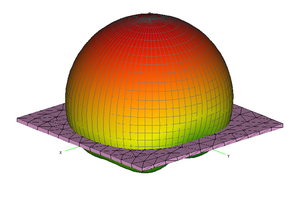Power Dynamics & Connectivity:
Fundamental to the Cyberdeck is its versatile power architecture. While its initial power source is the traditional shore AC, various DC transformers convert it into several outputs (24V, 12V, 9V, and 5V) to cater to the diverse needs of the electronic hardware. For times when the traditional grid fails us, we've integrated Anker's state-of-the-art portable power station, ensuring uninterrupted operation.
Moreover, in an era where connectivity is paramount, our Cyberdeck boasts an embedded 4G router, delivering seamless off-grid internet connectivity.
Design, Modeling & Assembly:
Our design journey commenced in the digital realm. Using CAD software, the Cyberdeck was birthed in 3D, granting us a meticulous blueprint.
With the assistance of Prusa, we transformed our 3D designs into reality. Using their reliable printers, we crafted tangible custom mounting plates, showcasing the utility of 3D printers for custom parts.
The cyberdeck's black cover plates are crafted from MDF using CNC milling, followed by laser engraving for the textual details.
OS & software
DFRobot, another significant partner, came onboard with the brain of our Cyberdeck, the impressive LattePanda Delta 3. PopOS breathes life into this system, ensuring a seamless software experience. However, the true prowess comes from the Docker containers, which efficiently run myriad services. At its core, lies Home Assistant, serving as the centralized hub for managing the network of sensors and actuators. A project on the "Raven" environment sensor packs will follow.
Sound and Power Backup:
To ensure our communications remain clear and resonate well, we've incorporated a premium conference speaker from Anker. Its impeccable sound quality guarantees that every piece of information, every alert, is clearly heard, ensuring the safety and operational efficiency of our habitat.
Connectivity & Extensions:
When it came to external connectivity, no compromises were made. The SpeakOn plugs became our choice for their impeccable reliability. These plugs seamlessly connect the Cyberdeck to the habitat's external facets, including its lighting system and the critical ballast tank valves.
Conclusion:
The Cyberdeck isn’t merely a piece of tech; it embodies SAGA Space Architect's commitment to pushing boundaries, be it in the endless cosmos or the mysterious depths of our oceans. With trusted partners like DFRboto, Prusa, Anker, and the collective expertise of our team, we're paving the way for future innovations. We’re excited to keep the Hackaday community updated with our subsequent endeavors and milestones!
 Marius Venø Bendsen
Marius Venø Bendsen
 tobychui
tobychui
 Tony
Tony

 Yonghan
Yonghan